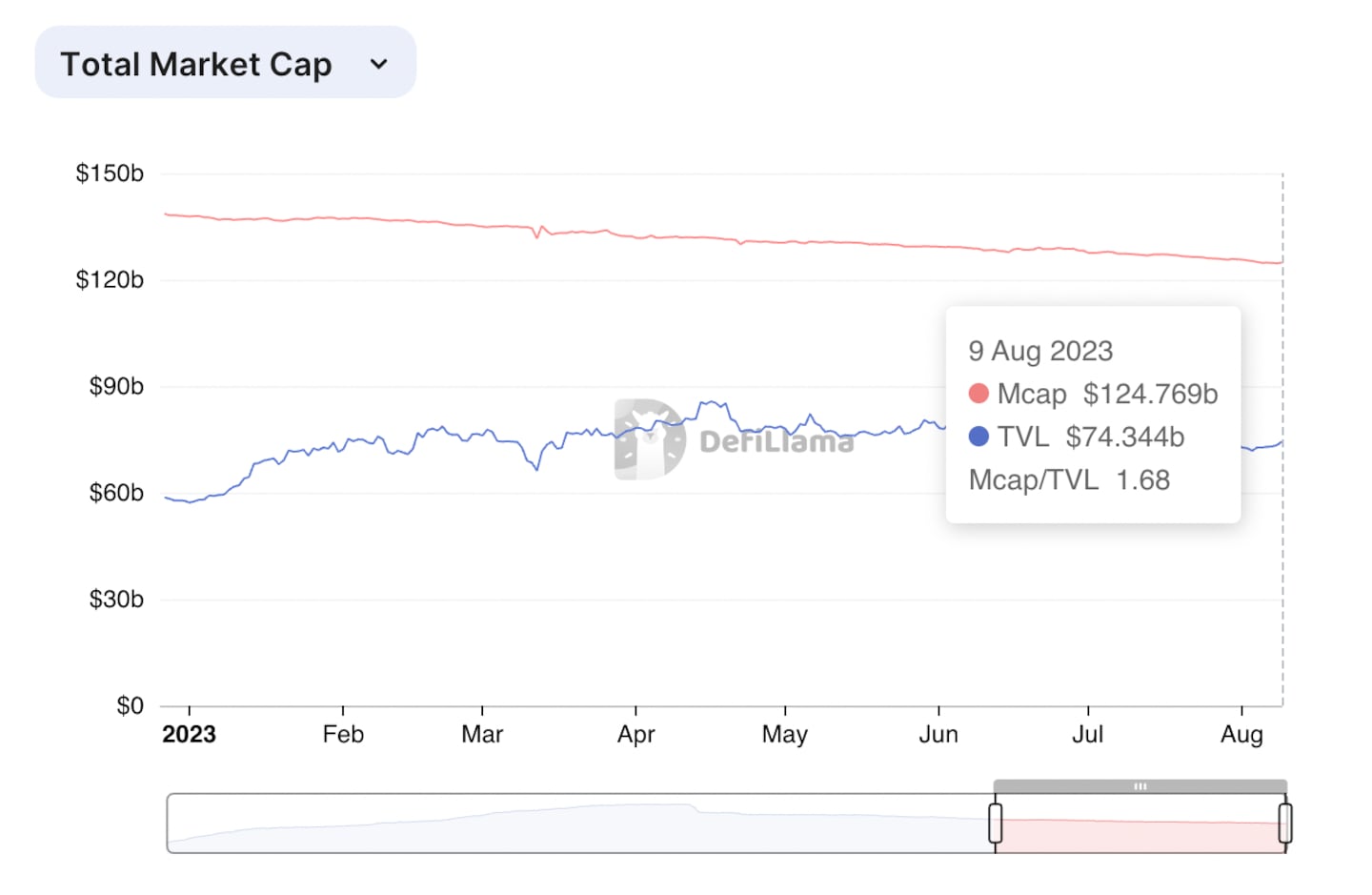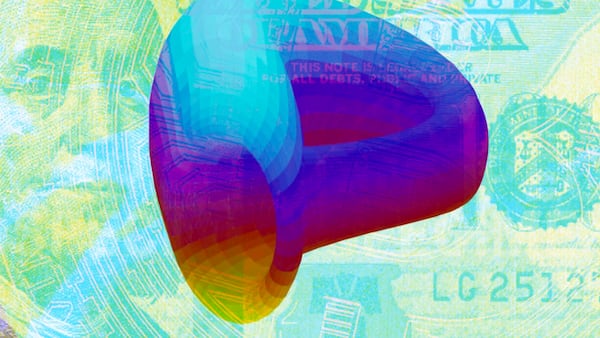- Online payments giant PayPal's USD-backed token bolsters confidence in blockchain-based payments.
- PayPal's entry comes as US members of Congress push for a landmark stablecoin bill.
When PayPal this week introduced a stablecoin it was a clear sign that traditional fintech players still see a lot of upside in cryptocurrency and its underlying technology.
More precisely, PayPal’s move was a vote of confidence in stablecoins, an instrument that has been under pressure in recent months: the market cap for Circle’s USDC is down more than 40% since March, investors question the integrity of Tether’s reserves, and lawmakers in the US Congress weighing a landmark stablecoin law.
Strong signal
Yet PayPal, a platform with 400 million active accounts and half the marketshare on online payments, has the clout to reset the debate. And that has crypto leaders, and even its rivals, excited.
“It is a strong signal that near-instant, borderless, and programmable payments in the form of stablecoins are here to stay,” Jeremy Allaire, co-founder and CEO of Circle, told DL News in a statement.
NOW READ: Why Circle can’t shake SVB hangover as market cap plunges to two-year low
At least that’s the hope.
Ever since Bitcoin hit the market 14 years ago, cryptocurrency entrepreneurs have dreamed of building a blockchain-based payments network that would provide consumers and businesses with a transparent, affordable, and speedy means of transferring money. The best part: no intermediaries such as banks.
With the introduction of PYUSD, a stablecoin backed by the US dollar, the industry might have taken one step closer on that quest.
But here’s the rub: PayPal released scant details on how the stablecoin will work, and there’s little evidence, at least for now, that it can overcome the obstacles that have so far prevented blockchain companies from reinventing traditional online payment systems.
‘This the type of movement that can cause the sort of mass adoption that frankly, the crypto space has been talking about for a long time.’
— Ari Redbord, TRM Labs
Launched on the Ethereum network, the stablecoin is available for select US users starting this week. PayPal plans on rolling the token out fully over the next couple of months. Early users may send person-to-person payments and fund purchases with the stablecoin. It will shortly be compatible with Venmo, the popular payment app in the US.
The big idea at work here is erecting a bridge between fiat currency and web3 for consumers, merchants, and developers, the company said in the announcement.
NOW READ: Why 150m Binance customers ignore regulatory woes and pile in anyway
The stablecoin is designed to “reduce friction” for users in virtual environments, potentially alluding to web3 payments and the metaverse – something blockchain technology has struggled to fine-tune with crypto wallets notoriously not user-friendly.
PayPal also wants to facilitate “fast transfers of value to support friends and family, send remittances or conduct international payments, enable direct flows to developers and creators, and foster the continued expansion into digital assets by the largest brands in the world,” according to the announcement.
Bandwidth issues
Amid all the news, there is no mistaking the sense that PayPal sees a huge opportunity in ironing out all the wrinkles that have prevented blockchain technology from truly revolutionising payments. Crypto wallets are unwieldy, blockchain firms are struggling to cope with regulatory pressure, and bandwidth issues and gas fees continue to plague Ethereum and its ilk.
That all means it’s harder than ever to see how blockchain-based payment platforms garner mass market adoption.
‘It’s more important than ever that Congress enact legislation to provide comprehensive digital asset regulation, especially for stablecoins.’
— Rep. Patrick McHenry
But PayPal already solved a lot of structural problems in reinventing the way we pay for things online. Monerium founder Sveinn Valfells said PayPal’s adoption of stablecoins is “paving the way for the first trillion dollars in fiat stablecoin market capitalisation.”
Valfells isn’t alone in this thinking. Paypal’s stablecoin on the market is “the type of movement that can cause the sort of mass adoption that frankly, the crypto space has been talking about for a long time,” said Ari Redbord, global head of policy and government affairs at blockchain intelligence firm, TRM Labs.
Crevices of the internet
Making blockchain technology available to the masses has been an ambition for its advocates but a challenge from the start.
For the past decade, crypto has emerged from the crevices of the internet, pushed forward by a digitally native generation but often submerged in complex interfaces, technical jargon and cliquish cults.
NOW READ: Get ready. These seven bills may decide the future of crypto in the US
“We need that moment where it becomes frictionless, where people see the technology and they get really comfortable with engaging in it,” Redbord said. “And this move by PayPal today is potentially that type of moment.”
Circle’s Allaire sent out a flurry of tweets on Monday, welcoming the payments firm to the space – and most notably seeking to dispel fears over USDC, Circle’s stablecoin.
The firm has issued $5 billion USDC over the past month, and redeemed $6.6 billion, Allaire told his followers.
Circle’s struggles
Essentially, there’s $1.6 billion less USDC in circulation now, and it’s been falling for months. Ever since the collapse of Silicon Valley Bank in March, the firm’s market capitalisation has been shrinking.
The broader stablecoin market has dipped nearly 10% over the past few months, with the total market cap falling to around $124 billion, according to DeFiLlama data.

Crypto — and, in particular, stablecoins which are deemed the gateway into decentralised finance — are climbing lawmakers’ agendas.
PayPal’s stablecoin launch comes ten days after the US House Committee on Financial Services passed a Republican-led bill for stablecoin legislation with a 34-16 vote, and limited support from Democrats.
Crypto on the Hill
Paypal’s move drew comment from the US House Committee on Financial Services Chairman, Patrick McHenry. The Republican Congressman grabbed the opportunity to push his stablecoin bill forward.
“It’s more important than ever that Congress enact legislation to provide comprehensive digital asset regulation, especially for stablecoins,” he wrote. “We are currently at a crossroads to keep America at the forefront of digital asset innovation […] We must finish the job.”
The bill will still need to pass a full house vote and make its way through the Senate to become law. If passed, stablecoin issuers would be regulated by financial firms like banks and would need to keep one-to-one reserves of safe assets backing the stablecoin.
NOW READ: Stablecoin laws could give US an edge — if they ever get off the ground
But PayPal’s established importance in the financial payments landscape may crank the heat under the pot.
Christopher Perkins, president of crypto-focused investment firm CoinFund, is glad to see an Ethereum-based stablecoin gaining support.
“There has been regulatory pressure against the use of public blockchains, especially amongst banks,” he told DL News. There may now be a shift since at the start of the year, the Biden administration highlighted “the imperative of separating risky digital assets from the banking system.”
Paypal’s licence
While the American stablecoin bill is still on the drawing board, the New York Department of Financial Services has laid out clear guidelines for stablecoin issuers. That may be why PayPal and Paxos are regulated there.
“Entities like Paxos have taken a trust-based approach in the US,” Monerium’s Sveinn Valfells told DL News, adding that they are “backed by high-quality segregated assets.”
NOW READ: Macron stokes Paris crypto scene with tax breaks and clear rules, but will VCs remain wary?
Paxos’ approach mirrors European e-money rules, Valfells added, this “enhances user trust and ensures the stability of the stablecoin’s value,” he noted. E-money rules in Europe ensure that issuers offer to redeem them one-to-one with a matching fiat currency and that they are fully backed by reserves.
Other stablecoins like Circle’s USDC, are based on non-homogeneous state money transmission licence, “which may not offer the same level of protection as e-money or trust-based approaches,” Valfells concluded.
Dollar-backed
“Being pegged to the US dollar, backed by US dollar deposits, short-term treasuries or cash equivalents: that was already a requirement from the New York DFS to be a stablecoin issuer or registered in the state or licensed in the state,” Redbord said.
PayPal also holds a so-called Bitlicense since 2022, a virtual currency licence the New York DFS established in 2015. “It’s not an easy licence to get and PayPal benefits from having one,” Perkins said.
Adam Morgan McCarthy is a London-based markets correspondent for DL News. Inbar Preiss is a Brussels-based regulatory correspondent for DL News. To contact the authors with story tips: adam@dlnews.com and inbar@dlnews.com.



